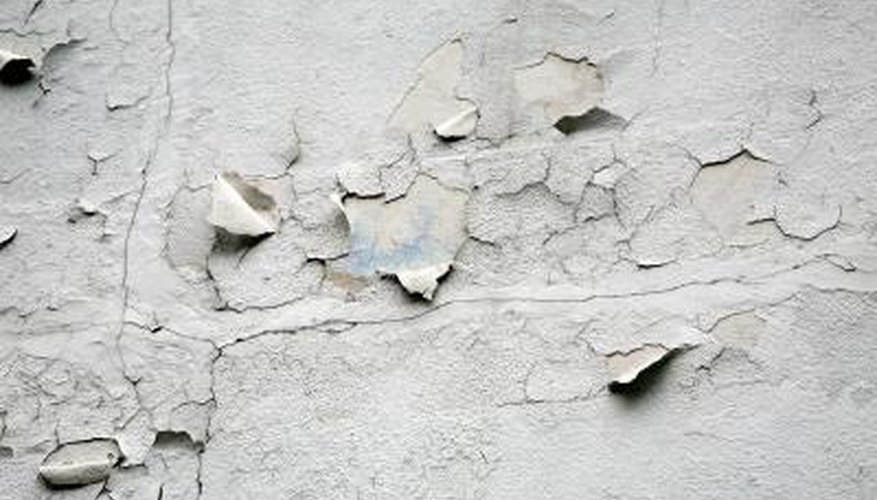Covering surfaces with emulsion paint is a common method of decorating. You can apply emulsion with a paintbrush and can of paint from a home supplies store. Emulsion paint is durable and if treated with care, the end result will last for many years. However, when it comes time to redecorate, removing emulsion paint from plaster can be a difficult and time consuming process unless you know a few handy tricks.
- Covering surfaces with emulsion paint is a common method of decorating.
- However, when it comes time to redecorate, removing emulsion paint from plaster can be a difficult and time consuming process unless you know a few handy tricks.
Examine the surface of the emulsion paint to determine whether it's loose on the plaster. If it is, scour the plaster with a carborundum block. The block removes loose emulsion paint from plaster, leaving the underlying plaster work clear and ready to work with again. Carborundum blocks are available from larger home decor stores.
Boil a kettle. Hold the boiling water to the wall to apply the steam to the emulsion paint. This softens the emulsion, making it a little puffy and easier to remove. Scrape the emulsion off the plaster using a wallpaper scraper. Collect the emulsion scrapings in a bag while they are still soft, otherwise they can become attached to the floor instead. If a kettle and scraper are not available, a steam stripper is just as effective.
- Hold the boiling water to the wall to apply the steam to the emulsion paint.
- Scrape the emulsion off the plaster using a wallpaper scraper.
Apply chemical paint stripper to a cloth or old rag. Rub the cloth over the emulsion. The chemical stripper reacts with the emulsion, breaking it down and making it easy to wipe away. Wipe away any excess emulsion and stripper with another cloth or old rag to fully clean the plaster.
TIP
It's not always necessary to remove emulsion, especially if you are simply redecorating with paint or wallpaper. If you are painting over it and it's not all flaky, just paint over it with a couple of coats. The new colour will not be harmed by the old colour underneath.
WARNING
Unfinished or untreated plasterboard, which is sometimes called "dry lining," must not be treated with steam cleaning or chemicals. These processes will inevitably result in the absorption of water into the plasterboard, making it soggy and warping it.
